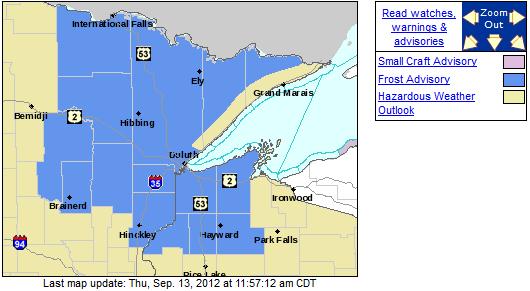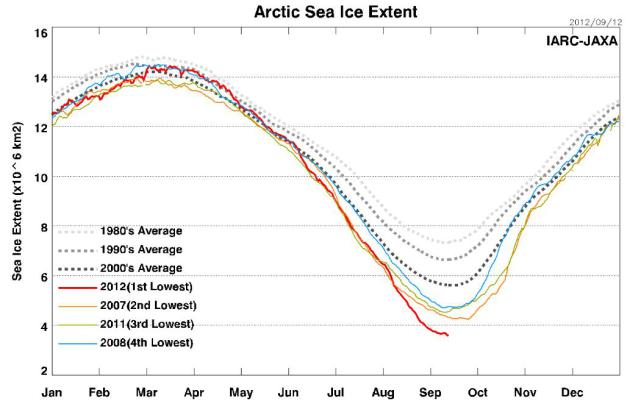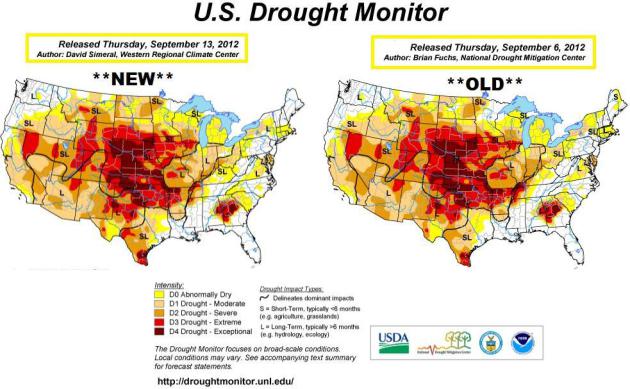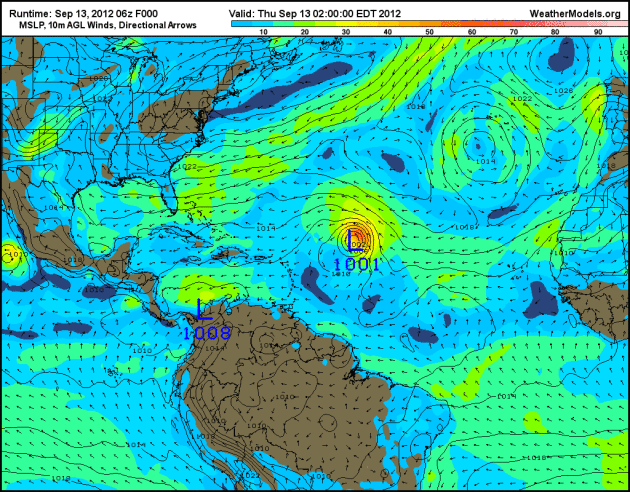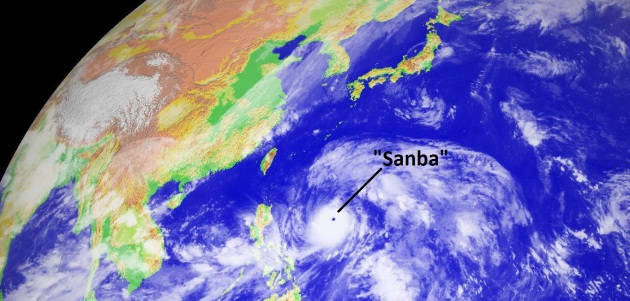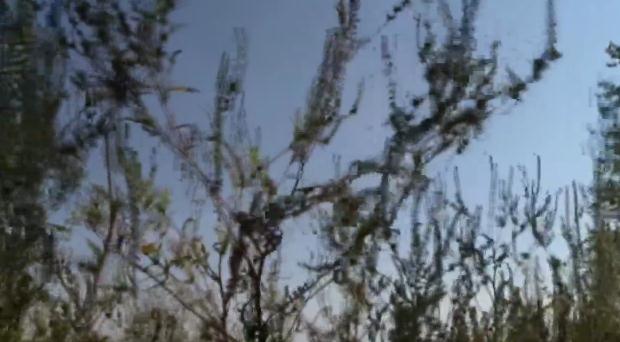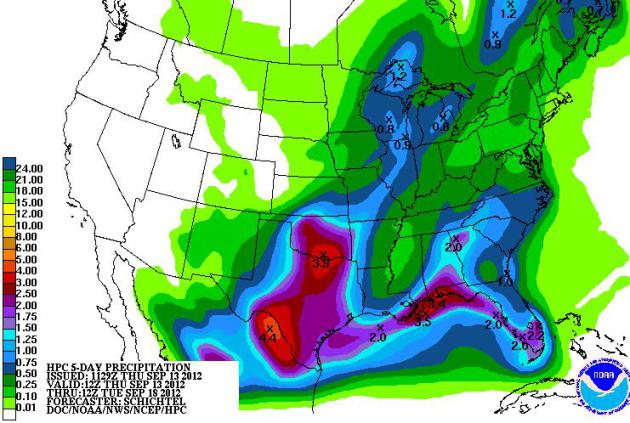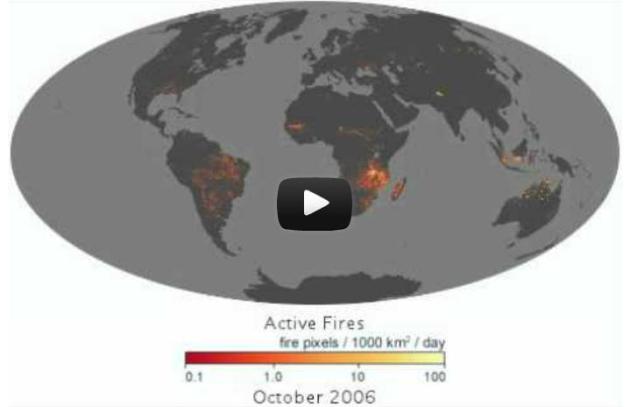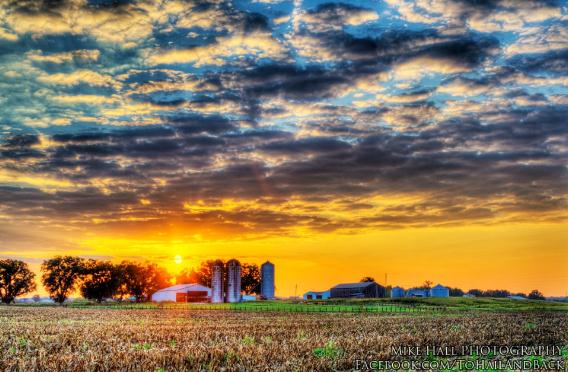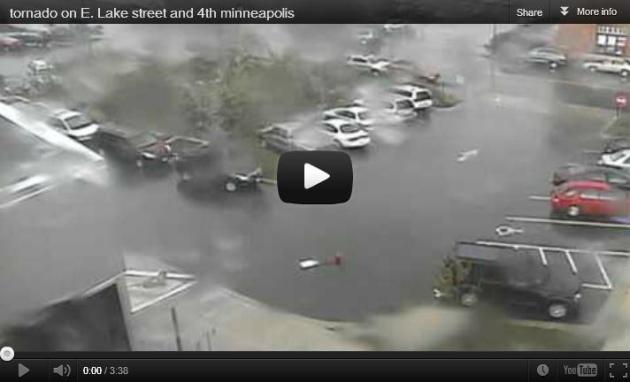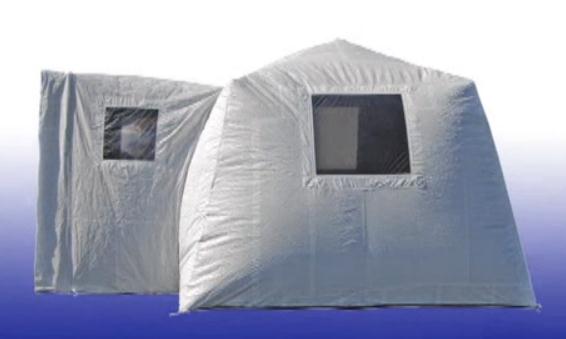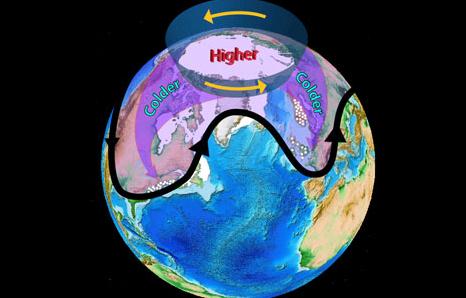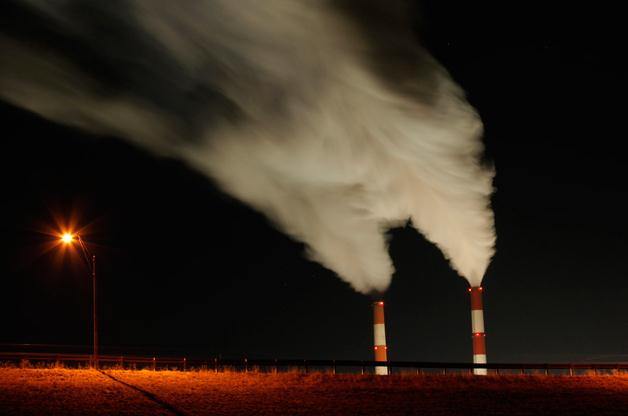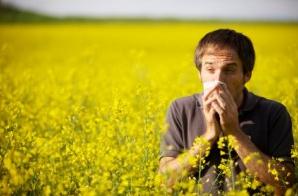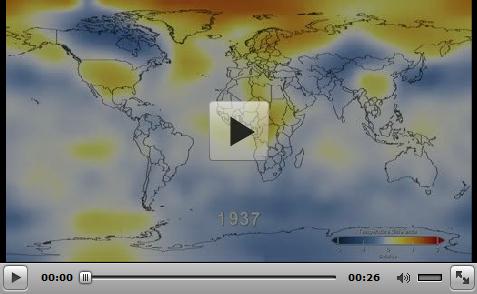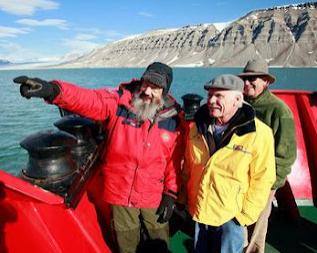 567 million
567 million smartphones will be shipped in 2012,
according to NPD DisplaySearch. That number is expected to surpass one
billion by 2016. Details at gizmag.com below.
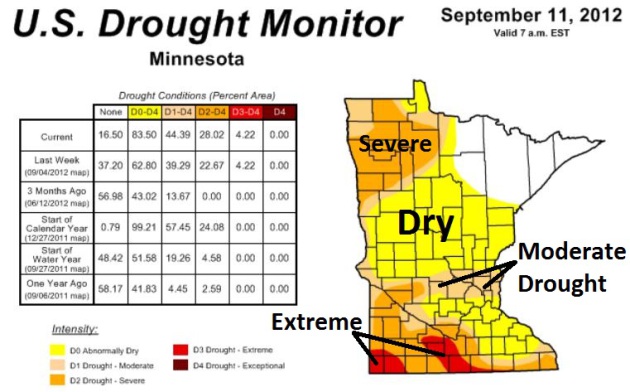 Spreading Drought.
Spreading Drought. According to NOAA's
Drought Monitor,
St. Cloud, Willmar and the entire north metro is in a moderate drought
(again). In fact 44.39% of Minnesota is in a moderate drought, up from
39% last week. Severe drought is impacting the Red River Valley, pockets
of extreme drought from Pipestone to Jackson and Worthington.
First Frost? No, I'm not ready for this either. No
frost in the immediate metro thru the end of next week, but some flowers
may freeze their buds off closer to Duluth and Hibbing by Friday
morning. If skies are perfectly clear and winds become calm there's a
good chance. Details from NOAA:
...FROST ADVISORY REMAINS IN EFFECT FROM 2 AM TO 8 AM CDT
FRIDAY...
* LOCATION...INLAND FROM LAKE SUPERIOR...ESPECIALLY IN LOW LYING
AREAS.
* TEMPERATURE...33 TO 36
* IMPACTS...TENDER VEGETATION MAY SUFFER EXTENSIVE DAMAGE.
PRECAUTIONARY/PREPAREDNESS ACTIONS...
A FROST ADVISORY MEANS THAT FROST IS POSSIBLE. SENSITIVE OUTDOOR
PLANTS MAY BE KILLED IF LEFT UNCOVERED.
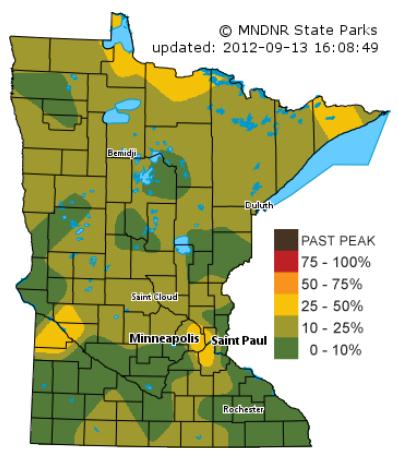 Fall Color Slightly Ahead of Schedule?
Fall Color Slightly Ahead of Schedule? According to the
Minnesota DNR 25-50%
of
trees in Hennepin, Ramsey and Dakota county are already ripening up,
about 7-10 days ahead of schedule. Dry weather may be accelerating
color, as trees across much of the metro are under stress.
Arctic Ice Melt Could Mean More Extreme Winters For U.S. And Europe.
What's happening at the top of the world will probably have a ripple
effect on winter weather from the USA to Europe and Asia. It's
counterintuitive, but a warmer Arctic means a smaller north-south
temperature contrast (what meteorologists call "baroclinicity"), which
in turn leads to lower jet stream winds. So what? A slower jet increases
the potential for blocking patterns, where weather patterns can stall
for days, even weeks at a time. Weather is more apt to fall into a rut.
It may be a snowy rut, or a mild rut - too early to say at this point in
time, but there's little doubt that record Arctic ice loss will have a
domino effect. Here's an excerpt of a good explanation from Climate
Nexus, Climate Central and
Huffington Post: "
The
record loss of Arctic sea ice this summer will echo throughout the
weather patterns affecting the U.S. and Europe this winter, climate
scientists said on Wednesday, since added heat in the Arctic influences
the jet stream and may make extreme weather and climate events more
likely. The “astounding” loss of sea ice this year is adding a huge
amount of heat to the Arctic Ocean and the atmosphere, said Jennifer
Francis, an atmospheric scientist at Rutgers University in New Jersey.
“It’s like having a new energy source for the atmosphere.” Francis was
one of three scientists on a conference call Wednesday to discuss the
ramifications of sea ice loss for areas outside the Arctic. The call
was hosted by Climate Nexus."
Image credit above: "
The extent of Arctic sea ice on Aug.
26, 2012, the day the sea ice dipped to its smallest extent ever
recorded in more than three decades of satellite measurements. The line
on the image shows the average minimum extent from the period covering
1979-2010." Credit: NASA/JPL.
Latest Trends. Arctic ice loss should be reaching a
minimum in the next 1-2 weeks, leveling out after record ice loss. The
previous record ice loss was 2007. Ice coverage and volume is roughly
20% less than it was 5 years ago.
Graphic credit:
Arctic Sea Ice Monitor data: Japan Aerospace Exploration Agency, Earth Observation Research Center
Drought of 2012: Status Quo. Not much change in the
U.S. Drought Monitor
- the driest conditions from the Midwest into the Central and Southern
Plains, a pocket of extreme/exceptional drought over eastern Alabama and
Georgia.
Weekend Weather Trends. Here is the latest 84-hour
NAM model, showing a fairly nice spell of moderate weather over the
northern tier states, a weakening cool front pushing showers into the
Northeast Friday night, skies clearing over the weekend across New
England. The best chance of heavy showers and T-storms extending from
Texas along the Gulf Coast; a growing chance of coastal showers for the
Carolinas by Sunday. A stronger cold front pushes showers into Minnesota
and the Upper Midwest late Sunday and Monday of next week.
"Nadine". We're up to the N's in the alphabet, but
"Nadine" should stay out over the open waters of the mid-Atlantic, not a
threat to the U.S coastline. I don't see any (storms with
names) threatening the USA looking out into the third week of September.
GFS model data above courtesy of NOAA and Ham Weather.
Monster Super Typhoon "Sanba" Aims At Okinawa And South Korea.
At a recent AMS conference in Boston I discovered that Atlantic
hurricanes are, on average, 40% smaller than Pacific storms. Why? A
larger ocean gives these ocean-forming storms more "runway", more fetch
out over warm 80-85 F. water to grow and expand. Here's an excerpt of an
interesting post from The Washington Post's
Capital Weather Gang: "
A
large, dangerous typhoon has rapidly gained strength in the western
Pacific. Super typhoon Sanba, positioned 690 miles south of Kadena Air
Force base, Japan, has peak winds of 155 mph, the equivalent of strong
category 4 hurricane, on the cusp of category 5. The storm is headed
due north, on a path to pass very near the island of Okinawa, Japan
late Saturday or early Sunday local time. After that, the storm is
forecast to continue due north towards the southern tip of South Korea
Monday, although southern mainland Japan is within the range of
possible tracks."
* image above courtesy of
Digital Typhoon.
Bad news for allergy sufferers (at least until the first frost):
Yes, Your Allergies ARE Worse This Year. KARE-11
confirms what those of us who suffer from allergies already know: the
drought is making things worse. Check out the video; here's an excerpt
of the story: "
If you're going through tissues like they're going
out of style, you're not alone. It's ragweed season, and it's a doozy.
"This time of year I take my prescription allergy medication but I also
take Sudafed on top of that, plus I quadruple the strength of my
asthma inhaler," says Kristine Crossman-Little. Kristine is like
thousands of others who always suffer at the end of summer, but this
year seems to have an extra allergy kick. Why? there are a couple of
reasons. First of all, the weather has been nice, which means you're
likely spending more time outdoors with the pollen. Then, there's the
fact that it has been so dramatically dry."
Allergy Season Made Worse By Drought. Just what you wanted to hear. Details from
KWWL-TV in Dubuque:
"Many
Iowans have found the symptoms of allergy season are bad this year.
Ragweed, a plant native to Iowa, is the main cause of what people
commonly call hay fever. Due to the drought, the pollen count is
especially concentrated. Rain helps wash away a weed's pollen, according
to Bob Hartzler, weed specialist with the Iowa State University
extension office and ISU professor of agronomy. With a drought this
summer, he said, wave after wave of pollen has entered the air -- and
people's sinuses. "The fall of the year tends to be very problematic
for allergy sufferers, especially those that are pollen allergic,"
allergy and asthma doctor Brad McClimon said Tuesday afternoon at
Medical Associates in Dubuque. "The weeds, such as ragweed, tend to
pollinate in the fall of the year, from about mid-August until the first
frost, so we're right in the midst of the pollen season."
5-Day Rainfall Outlook. NOAA HPC
is predicting some 3-5" rains from Oklahoma into the Rio Grande Valley
of Texas, 2-3" amounts from Biloxi to Mobile and Pensacola. Florida sees
more soakers, some 2" amounts for Tampa, Naples and Miami.
The Evolution Of Wildfires Around The World. Here's a link to an amazing animation, courtesy of The New York Time's Andy Revkin and
The Washington Post: "
Andrew Revkin of Dot Earth passes along
this fascinating video from the NASA Earth Observatory showing the
“global pulse of fire” around the world since 2000. NASA offers this bit
of commentary: The fire maps show the locations of actively burning
fires around the world on a monthly basis, based on observations from
the Moderate Resolution Imaging Spectroradiometer (MODIS) on NASA’s
Terra satellite. The colors are based on a count of the number (not
size) of fires observed within a 1,000-square-kilometer area. White
pixels show the high end of the count —as many as 100 fires in a
1,000-square-kilometer area per day. Yellow pixels show as many as 10
fires, orange shows as many as 5 fires, and red areas as few as 1 fire
per day."
Where Is The Hottest Place On Earth? Easy question, but the answer is a bit problematic. Here's an excerpt of an interesting article from
NASA's Earth Observatory. "
In
October 2004, ecologist Steve Running visited the Flaming Mountain, a
ridge of dark red sandstone on the edge of the Taklimakan Desert and
the Tian Shan range. The surface of the mountain is said to reach
temperatures of 50 to 80°C (122 to 175°F) in the summer, and a nearby
tourist center marks the spot with a huge golden thermometer. It is the
hottest place in China, if not the world, or so says the local lore."
Photo credit above: "
According to local lore, the Flaming
Mountain is the hottest spot in China. After visiting the site,
scientists used NASA data to find out for sure." (
Photograph ©2011 oh contraire.)
Sunset On Muddy Gut Road. Mike Hall snapped this terrific shot near Hancock, Kentucky late yesterday. Perfect.
Top 10 Tornadoes Caught On Surveillance Camera. This
is interesting - now that we have so many webcams recording video
around the USA, every now and then they catch the arrival of a
full-blown tornado. Some incredible footage in this post from
ustornadoes.com: "
I
chose these videos — what I consider to be the top 10 tornadoes caught
on security cam — to show the versatility of surveillance solutions.
Granted, the cameras that caught the tornadoes presented here had a
different goal when initially installed. But as you can see below, these
cameras can often go beyond their intended purpose. And sometimes,
with a little luck, you can get a glimpse at something that otherwise
might have gone unseen."
In-Flight Entertainment. Here is a link to a
remarkable web site, one that shows near real-time flights in the air at
any given moment. Many flights are delayed by at least 5 minutes, for
security reasons. After visiting
flightradar24.com I have newfound respect for air traffic controllers. Yeah - these men and women are probably underpaid.
Smartphone Shipments Tipped To Pass One Billion In 2016.
It's nothing short of a revolution, from desktop computing to having a
supercomputer in your pocket. One that makes voice calls too. Details
from
gizmag.com: "
The
latest research from NPD DisplaySearch suggests that the smartphone is
quickly heading for ubiquity, with annual shipments expected to exceed
one billion in 2016. Given there are only seven billion people on the
planet, a significant proportion of the earth's inhabitants can be
expected to be carrying one by that point, signalling a huge shift in
computer ownership. Who would have thought just ten years ago that most
of us would be carrying a computer in our pocket."
Photo credit above: "
Annual smartphone shipments are predicted to double by 2016." (Photo:
Shutterstock)
Not Your Grandfather's Fishing Boat. 210 mph out on the open ocean? Can you troll behind this baby? Check out the amazing
YouTube video focused on Miss GEICO: "
The
third Outpeformer mini doc follows Miss GEICO's boat pilot, Marc
Granet, to chronicle what it takes to command a championship winning
team and drive a boat capable of speeds in excess of 210 miles per hour,
over open ocean and choppy waterways." More details
here.
Worried About Chemical or Biological Attacks? Consider a "Biodome". For the (paranoid) family that wants to be ready for anything and everything; here's a clip from
Time Magazine: "
Get
your own personal dome to protect you and your family from biological
and chemical weapons! “The BioDome is the culmination of years of
intense research and product design in the private, medical and
military sectors,” said BioDome inventor Martin Gustafson. “We’ve
designed a system to meet military requirements that can protect anyone
from dangerous chemical/biological agents, in the event of a terrorist
attack, accidental chemical spill or biological emergency.” The
BioDome comes in two 60-pound cases and inflates itself in 10 minutes
into a 10-foot square room – for either indoor or outdoor use – that
can house six adults (!) for “up to several days” (!). Comes complete
with 4-by-6-foot airlock to keep germs or chem-weaps at bay."
Photo credit above: The BioDome: "Your 10-minute solution to bio-chemical threats," the manufacturer says.
Video: Spider Interrupts KOLD-TV Meteorologist.
I'm always amused when spiders and bugs crawl across TV webcams,
looking like something out of a bad B-action horror film. Here's an
explanation (and video clip) from
TVSpy: "
KOLD chief meteorologist Chuck George had his weather forecast interrupted by an uninvited guest during last night’s 10 p.m. newscast (video after the jump). The Tucson CBS affiliate’s website
said George was unsure of what to do with the large arachnid but gave
the the director enough time to take a close up without weather
graphics. "He didn’t know if he should call attention to it, afraid the
audience wouldn’t be able to see it, but what appeared to be a wolf
spider was too large to go unnoticed!"
A Lazy Jet
The winter forecast is always a riddle - wrapped
in an enigma. It's a little like predicting where the S&P 500 will
be next February. Good luck. Last winter was a slushy speed-bump, while
2010-2011 brought punishing snowstorms for much of America.
There's a growing body of evidence that rapid
melting in the Arctic is influencing our winters. Every day last month
an area of ice the size of the state of Maine (!) melted at the top of
the world. Water cycles warmth back into the atmosphere faster than ice.
The Arctic is now warming twice as fast as the USA. This is slowing jet
stream winds, allowing weather patterns to get "stuck"; falling into a
persistent rut.
Will Arctic Amplification play a role in our
upcoming winter? Probably. Arctic ice is at a record low - 20 percent
lower than the previous record in 2007, roughly HALF the size it was
back in the 70s. Expect the unexpected.
A sunny, lukewarm weekend is on tap; highs may
top 80 F. A few clippers will push chilly, Canadian air south of the
border next week. A little rain Monday gives way to blustery 50s
Tuesday; a 1 in 3 chance of flurries (way) up north.
99F. in Madison this week - snowflakes the next?
Hang on tight.
Climate Stories...
Climate Chronicles: Climate Change Becomes A Business Reality. The story from
Bloomberg Businessweek; here's an excerpt : "
This
is the year climate change should have hit home. The first eight
months are the hottest on record in the U.S., and Arctic sea ice is
about to hit a record low. Extreme weather, as we’ve come to call it,
has affected everything from the juiciness of the steak at Peter Luger
(high corn prices mean steer are being killed before there’s sufficient fat in the marbled meat) to crime rates, as some blame the recent heist
of $30 million of maple syrup in Quebec to a one-third drop in U.S.
production. No wonder the Carbon Disclosure Project has seen a sharp
spike in the number of large companies that view global warming as an
immediate threat to their operations. The percentage that see danger
right now has jumped to 37 percent of respondents in this year’s CDP
Global 500 Climate Change Report, released on Sept. 12, up from 10
percent just two years ago."
Photo credit: Charlie Riedel/AP Photo. "
Time exposure of smokestacks at the La Cygne Generating Station coal-fired power plant in Kansas."
NRDC Report: Typical Wind Farm Supports Nearly 1,100 Jobs, Adds Millions Of Dollars To Local Economies. Here's an excerpt from a recent press release from the
Natural Resources Defense Council: "
Each
major wind farm in America creates nearly 1,100 jobs and can add tens
of millions of dollars in new taxes and other benefits to the
communities where they’re located, according to two new reports from the
Natural Resources Defense Council. A new 250-megawatt wind farm will
create 1,079 jobs throughout the many steps of building that wind farm,
according to the NRDC report “American Wind Farms: Breaking Down the
Benefits from Planning to Production.” These are positions in
manufacturing, construction engineering and management, among other
areas. But the benefits don’t end there, a separate NRDC study on the
secondary impacts of the wind energy industry shows."
Climate Change Will Extend Hay Fever Season By Six Weeks.
Oh that's just great. I'm liking the milder trends to some extent, but 6
more weeks of sneezing, wheezing and sniffling? Details from The
Guardian and
Mother Jones: "
Hay
fever sufferers face longer pollen seasons and highly allergenic new
strains from invasive plants, a new report on the health effects of
climate change on the UK warned on Tuesday. Global warming will cause
earlier flowering, possibly extending the hay fever season by six
weeks, and enable new species to grow in the UK. Pollen is also
getting more potent, packing more allergen into each grain. The report,
from the Health Protection Agency
(HPA), analyses a wide range of risks including killer heatwaves,
increased flooding, greater food poisoning and new infectious diseases
carried by mosquitoes."
Hot Graphics - Global Warming In Images. Here's a
snippet of a post that summarizes the global trends we're witnessing in
recent decades with excellent visuals and animations; from
getenergysmartnow.org: "..
This NASA graphic impressively provides 131 years of temperature data in 26 seconds. "The
global average surface temperature in 2011 was the ninth warmest since
1880, according to NASA scientists. The finding continues a trend in
which nine of the 10 warmest years in the modern meteorological record
have occurred since the year 2000. … The comparison shows
how Earth continues to experience warmer temperatures than several
decades ago. The average temperature around the globe in 2011 was 0.92
degrees F (0.51 C) warmer than the mid-20th century baseline."
Extreme Weather & Climate Events: 2012.
Here is a remarkable timeline summary of 2012: the warmest, and
probably the most severe year in U.S. history, but an unusual number of
extremes were witnessed worldwide. Check it out for yourself at
tiki-toki.com.
Heat: A Bridge To Climate Consensus? Huffington Post has the story; here's an excerpt: "
Excessive heat is becoming a public health threat, especially in cities. It leads to heat stroke, heat exhaustion, and is a catalyst for ground-level ozone creation as well as asthma and lung disease.
However, and perhaps even more importantly, heat may be the bridge to
climate consensus. While extreme heat is not climate change in itself,
it amplifies the heat impacts of climate change
-- thus also amplifying the threats to human health. It therefore
provides an opportunity that allows climate believers, agnostics, and
deniers to work together to address a common threat to our society.
Regardless of the motivations, dealing with extreme heat can help
mitigate climate change, providing added benefits to society."
Arctic Warning: As The System Changes, We Must Adjust Our Science. Here's an excerpt from
Climate Code Red: "
The Arctic sea-ice big melt of 2012 “has taken us by surprise and we must adjust our understanding of the system and we must adjust our science
and we must adjust our feelings for the nature around us”, according
to Kim Holmen, Norwegian Polar Institute (NPI) international director.
From Svalbard (halfway between mainland Norway and Greenland), the BBC’s
David Shukman reported
on 7 September that Holmen had described the current melt rate “a
greater change than we could even imagine 20 years ago, even 10 years
ago”.
Photo credit above: "
Northern Polar Institute Research
Director Kim Holmen, left, with UN Foundation Board Chairman Ted Turner
and President Timothy Wirth in the Arctic."
Faking That NASA Faked The Moon Landing. More on conspiracy theories and a possible link to ongoing climate change denial from
shapingtomorrowsworld.org: "
Data
integrity is a central issue in all research, and internet-based data
collection poses a unique set of challenges. Much attention has been
devoted to that issue and procedures have been developed to safeguard
against abuse. There have been numerous demonstrations that internet
platforms offers a reliable and replicable means of data collection,
and the practice is now widely accepted. Nonetheless, each data set must
be examined for outliers and “unusual” responses, and our recent paper
on conspiracist ideation and the motivated rejection of science is no
exception. Perhaps unsurprisingly, after various unfounded accusations
against us have collapsed into smithereens,
critics of our work have now set their sights on the data. It has been
alleged that the responses to our survey were somehow “scammed,”
thereby compromising our conclusions."
Permafrost Thaw Will Speed Up Global Warming, Study Says.
CBC News has the story; here's an excerpt: "
Permafrost
soils in Canada's Arctic are melting at a rate that will significantly
speed up global warming, according to new research from the University
of Victoria. The study, published this week in Nature Geoscience,
predicts that the thawing permafrost will release between 68 billion
and 508 billion tonnes of carbon into the atmosphere by the year 2100.
As a result of those carbon emissions, researchers say the Earth's
temperature will rise by more than 0.5 C by the end of the century." Image above: NASA.


